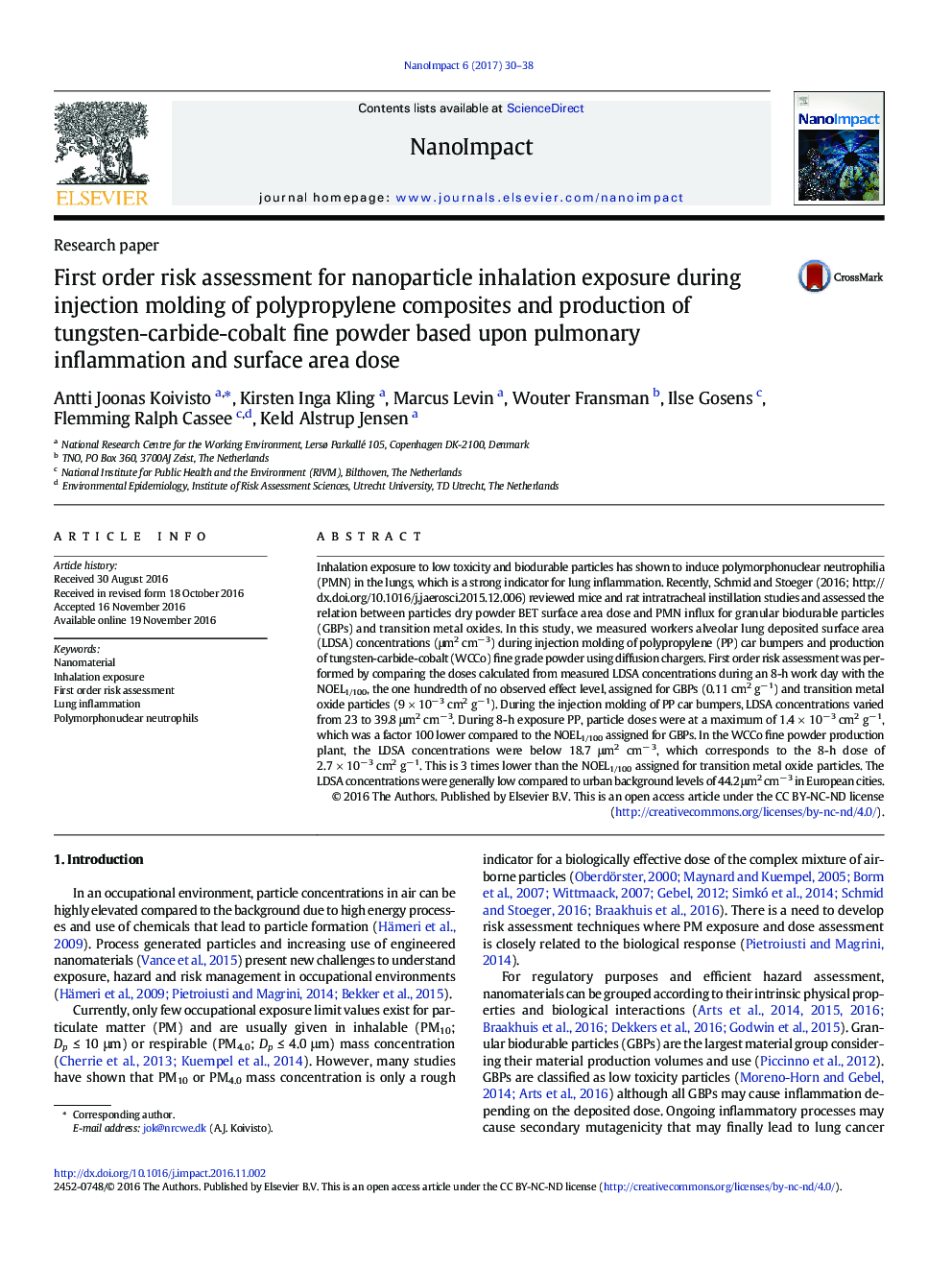| کد مقاله | کد نشریه | سال انتشار | مقاله انگلیسی | نسخه تمام متن |
|---|---|---|---|---|
| 5560752 | 1562021 | 2017 | 9 صفحه PDF | دانلود رایگان |
- Inhalation exposure to particles during injection molding and WCCo powder production
- Measurement of process specific particle concentration and morphology
- Implementing surface area dose response for nanoparticle exposure risk assessment
- First order risk assessment based upon pulmonary inflammation and surface area dose
Inhalation exposure to low toxicity and biodurable particles has shown to induce polymorphonuclear neutrophilia (PMN) in the lungs, which is a strong indicator for lung inflammation. Recently, Schmid and Stoeger (2016; http://dx.doi.org/10.1016/j.jaerosci.2015.12.006) reviewed mice and rat intratracheal instillation studies and assessed the relation between particles dry powder BET surface area dose and PMN influx for granular biodurable particles (GBPs) and transition metal oxides. In this study, we measured workers alveolar lung deposited surface area (LDSA) concentrations (μm2 cmâ 3) during injection molding of polypropylene (PP) car bumpers and production of tungsten-carbide-cobalt (WCCo) fine grade powder using diffusion chargers. First order risk assessment was performed by comparing the doses calculated from measured LDSA concentrations during an 8-h work day with the NOEL1/100, the one hundredth of no observed effect level, assigned for GBPs (0.11 cm2 gâ 1) and transition metal oxide particles (9 Ã 10â 3 cm2 gâ 1). During the injection molding of PP car bumpers, LDSA concentrations varied from 23 to 39.8 μm2 cmâ 3. During 8-h exposure PP, particle doses were at a maximum of 1.4 Ã 10â 3 cm2 gâ 1, which was a factor 100 lower compared to the NOEL1/100 assigned for GBPs. In the WCCo fine powder production plant, the LDSA concentrations were below 18.7 μm2 cmâ 3, which corresponds to the 8-h dose of 2.7 Ã 10â 3 cm2 gâ 1. This is 3 times lower than the NOEL1/100 assigned for transition metal oxide particles. The LDSA concentrations were generally low compared to urban background levels of 44.2 μm2 cmâ 3 in European cities.
.113
Journal: NanoImpact - Volume 6, April 2017, Pages 30-38
